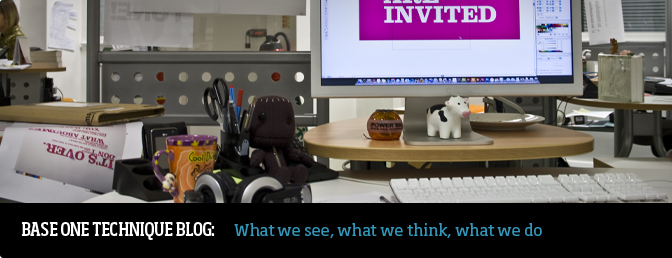Socrates, b2b and the creative brief

"Understanding a question is half an answer."
Socrates
Funny thing, briefs. Much maligned and rarely praised, yet they're the genesis of every unforgettable ad you've ever seen or heard. Good, bad, b2b or b2c, behind every ad you're sure to find one strutting proudly or lurking apologetically.
The first sandwich board guy proclaiming that the End is Nigh was even working to one (we've got to get the message across that the apocalypse is on its way, and we've got to use the most effective media to do it. Poster? Newspaper ad? Horse-drawn banner, maybe?)
Ideally, a great creative brief (as opposed to the bread-and-butter briefs essential to the day-to-day work of the agency) can involve every department - strategists, planners, account execs and creatives. There's a lot of effort that goes into one. So you'd think a lot of time should be invested in coming up with one. But we all know that that's not always possible. And when it comes down to it, a brief is only as good as the weakest link in the process - and there are a lot of links.
Inspired thinking? Or work order?
"Take a look at that brief on your desk today. How does it stack up?
Do you feel inspired by it, or is it more of a work order coming from the account and planning team?"
Howard Ibach
How to Write an Inspired Creative Brief
To appreciate what an inspirational creative brief looks like, I think we need to talk about what one of Howard Ibach's 'work order' briefs might look like first:
- It might fail to expand on the client's initial brief to the account team.
- It may take as its focus reams of product & background information in place of a clear message for the creatives to work from.
- It may have nothing unique or distinctive to say about the product or service & offer no insights.
- It may start the creatives off in the wrong direction with a weak insight, so that they waste time digging around to trying to discover what the real issue is.
- At its worst, a bad brief may just fail to inspire the creatives at all.
But how to inspire creative types when all you have is a list of product features? Try pictures. Videos. Maps. Anything to get them interested. But they do respond very well to emotive words.
Copywriting guru and rigorous thinker Howard Ibach has a lot of good stuff to say on what it takes to produce a great creative brief:
"A great creative brief should always be single-minded but never a straightjacket. The best creatives don't work to a brief. They work from it. Most of all...the creative brief needs to be like the work itself - bold, ambitious and creative. When it is, the brief becomes a springboard that drives creative people further. It should inspire as well as direct."
I like it. Brief as a springboard to an engaging creative solution that answers the client's problem. And if you believe Ibach (and I do):
"...a brief reduced right down to its core will most likely produce better results than a brief packed full of inane detail."
But what happens when you try to prise out a clear, single proposition from the multiple-message, high-volume, fast-turnaround and budget-constricted b2b machine?
Thinking with your gut
With all but the biggest b2b clients, a clear, single proposition can be difficult or impossible to achieve; the acute lack of time and budget militate the necessary research and strategy. And even then, a trusting, marketing-savvy client, a clear proposition, everyone firing on all cylinders and the time in which to do it all, need to be bundled into the mix to increase the chances of a great creative brief emerging.
It's not a hazard peculiar to b2b, but it is a common one. So if account teams are basing a brief on a single proposition, they need to rely on experience, gut feeling and intuitive guesswork. But we shouldn't always need to rely on gut instinct.
Enter Socrates
We can instead rely on a different method to determine the focus of the b2b creative brief. A bit of good old Socratic Method ; clear thinking and challenging accepted wisdom. Big fan of face-to-face discussion, was Socrates. Loved a chat. Great orator. Thing is, Socrates had a problem with the written word. And paintings. The trouble was, he told his student Plato, when you ask them a question, all you get in return is ...silence. And it's the same problem when a written brief plops on a creative's desk. You can't ask it a question.
b2b thinking
I'm guessing that to have the best chance of extracting a clear proposition or two from a b2b brief, Socrates would advocate some good old face time. Client, accounts, and creatives - asking questions of it. Exploring. Debating. Challenging it, to arrive at an agreed, shared vision of objective and proposition. And so no-one's toes are trodden upon, whoever is giving the brief needs to understand that the questioning is there to check the validity and strength of the conclusion - and not a threat or a challenge to them personally.
And once everyone's bought into it, I reckon Socrates would advocate another tenet of Socratic Method: if you think it's right, you should do it - no matter the consequences.
So take a long look at the next brief you have to work on and ask yourself: what would Socrates think?
Care to philosophise?
In an effort to instil even more rigour into our briefing process, we're planning on introducing some good old Socratic Method here at Base One. If there's any tips or tried and tested techniques you'd like to share with everyone on how to get the most from the briefing process, we'd be interested to hear what you're thinking.






Reply